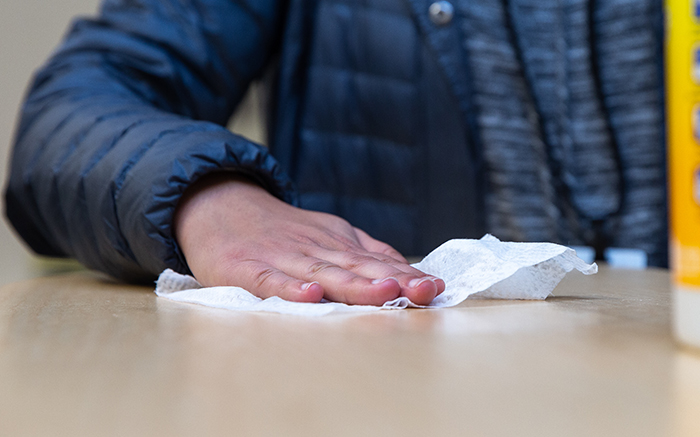Preparing for Disaster: UNM Hospital Participates in Region-Wide Emergency Training

Viral Signatures
UNM Study Looks for Evidence of SARS-CoV-2 Transmission on Exposed Surfaces
Early in the COVID-19 pandemic some studies suggested the SARS-CoV-2 virus could linger on exposed surfaces – fomites – and potentially spread infection in health care settings.
“There was a lot of concern by staff and clinicians, about being safe and protected,” remembers hospitalist Christopher S. Bartlett, MD, MPH, assistant professor and associate vice chair of quality and safety in The University of New Mexico Department of Internal Medicine.
One paper he read reported the virus had been detected on fomites inside and outside of patient rooms. “The next question is, ‘Well, are they infectious?’” Bartlett said. He and his colleagues launched a study to find out.
A paper published in the journal Experimental Biology and Medicine outlined how the team identified a dozen COVID-positive patients newly admitted to UNM Hospital in April 2020. In each case, Bartlett swabbed the exposed cheeks, foreheads and necks of PPE-clad physicians and nurses before and after they entered patient rooms.
Because the patients were within a day or two of being admitted it was presumed their viral loads were near their peak, posing the highest risk of infection via fomites, Bartlett said.

Although we did not detect live virus on the high-touch surfaces in the hospital, we should all remain vigilant in maintaining safety precautions in the hospital setting
Each provider was swabbed at their first clinical encounter of the day, minimizing the likelihood of contamination from a prior patient. Bartlett also swabbed nearby phones, computer keyboards, door handles and thresholds for a total of 82 samples, which were then turned to scientists in the UNM Center for Global Health for laboratory analysis.
Ivy Hurwitz, PhD, an associate professor of Internal Medicine, and her team tested the samples for the presence of SARS-CoV-2 – and the results were reassuring.
“We did see signs of viral signatures on some of these high-touch areas,” she said. “But we were unable to culture any virus, suggesting that there were low to no live viruses on the surfaces sampled.”
Hurwitz notes UNMH was taking extraordinary measures to protect providers and staff from infection, which included housing COVID-19 patients in negative pressure isolation rooms equipped with HEPA exhaust fans that provided at least 12 air exchanges per hour.
And, hospital personnel were regularly wiping down surfaces with antiviral disinfectant wipes. “Residual disinfectant from these practices likely contributed to maintaining low levels of live virus on these surfaces,” she said.
In April, the Centers for Disease Control and Prevention reported that the virus is primarily transmitted via respiratory droplets or aerosols that are inhaled or deposited on mucous membranes. It is possible to become infected by touching mucous membranes with hands that have touched virus-laden surfaces, but the CDC found the comparative risk is low.
Hurwitz and Bartlett caution not to read too much into the fact that their research did not detect any live viruses. They suggest that the hospital’s disinfection measures were likely effective in killing the virus and caution that high-touch surfaces that are not regularly disinfected might still be a route of transmission.